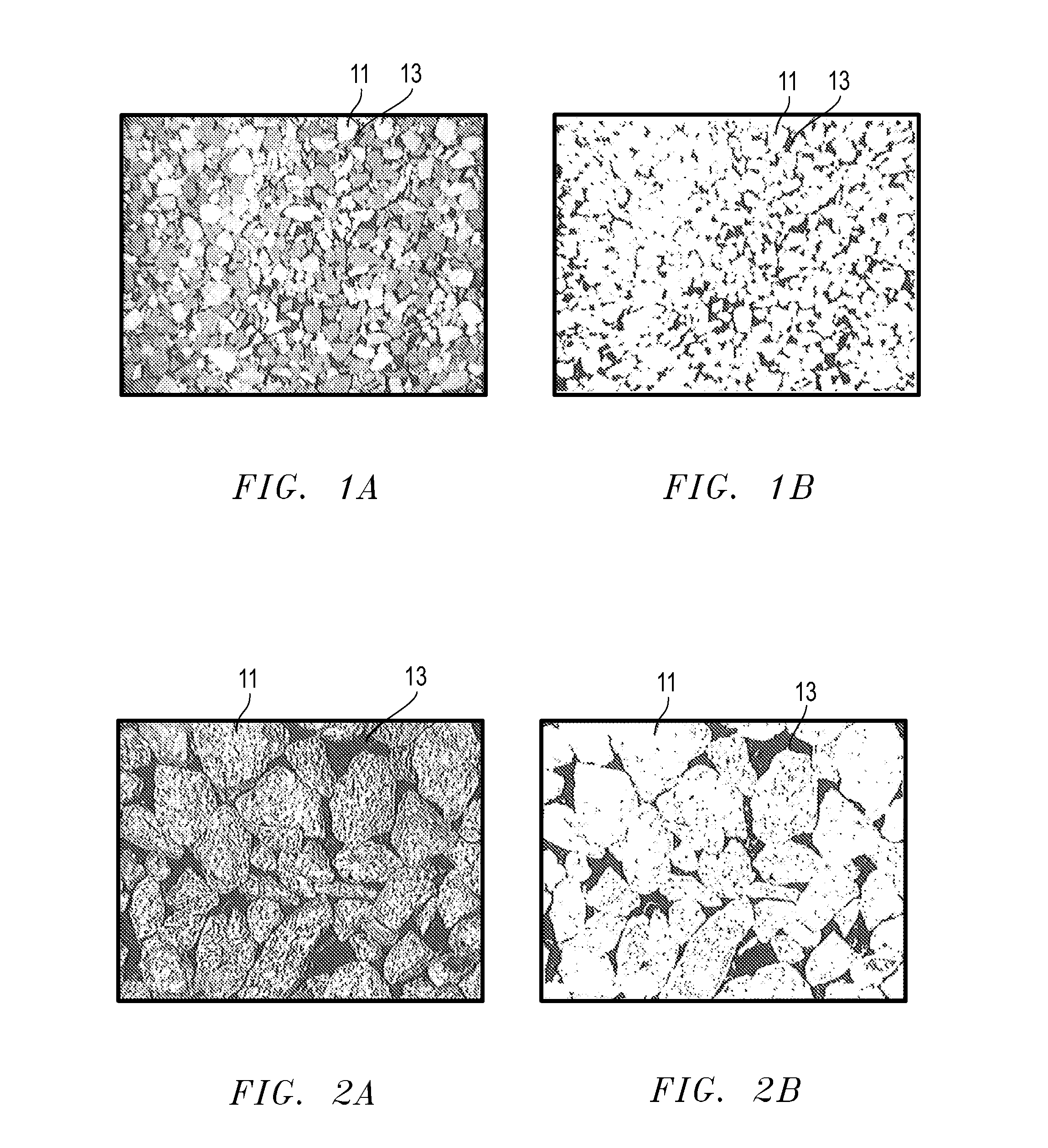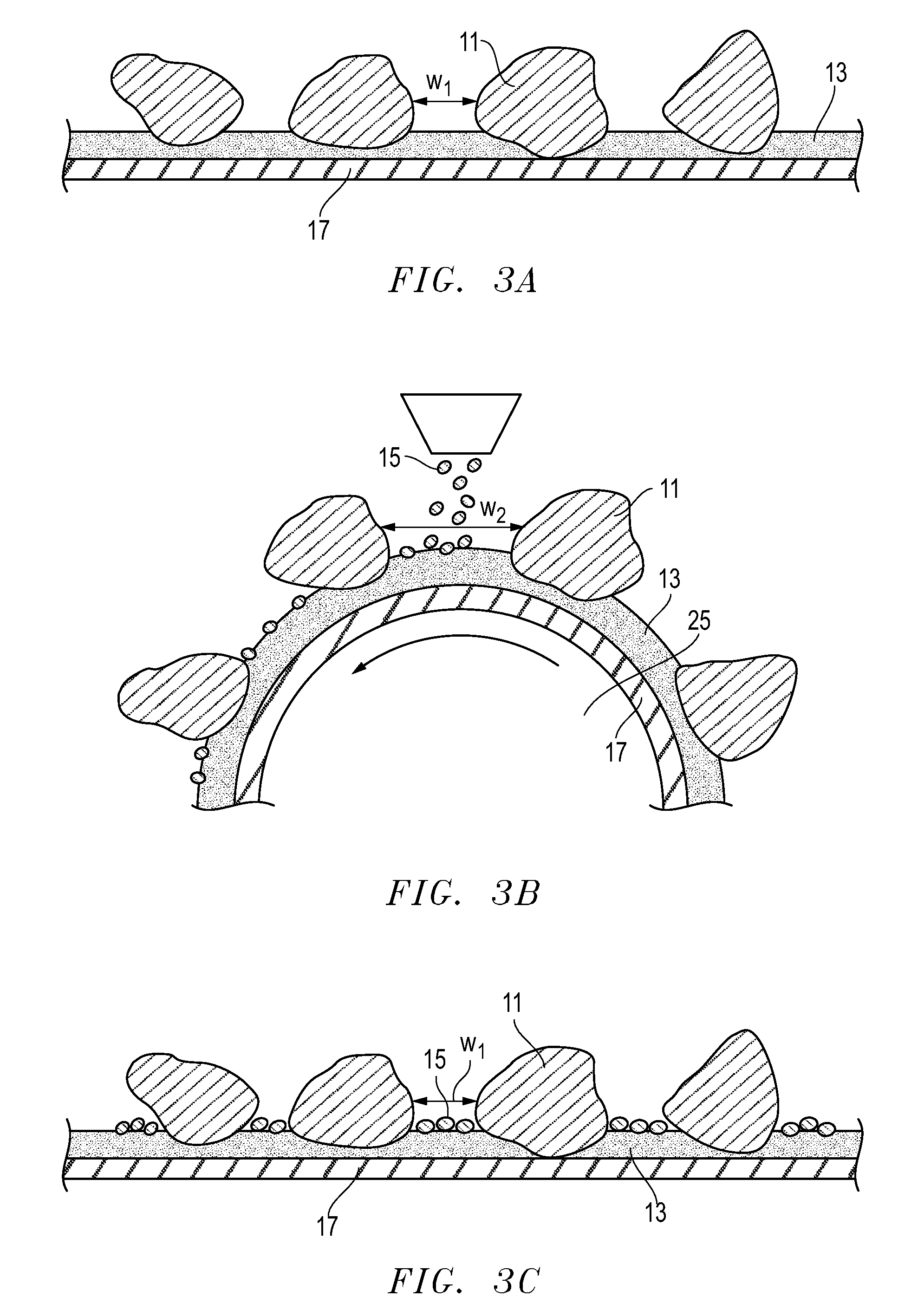System, method and apparatus for increasing surface solar reflectance of roofing
a technology of surface solar reflectance and roof, which is applied in the field of roofs, can solve the problems of increasing the demand for indoor cooling energy, contributing to smog formation, and significant amounts of solar heat flux that can be absorbed by the surface with low solar reflectivity
- Summary
- Abstract
- Description
- Claims
- Application Information
AI Technical Summary
Benefits of technology
Problems solved by technology
Method used
Image
Examples
example 1
[0032]Samples of modified bitumen membrane (e.g., Flinlastic GTA cap sheet, available from CertainTeed Corp., Little Rock, Ark.) with Energy Star rated solar reflectance of 65% were filled with two types of reflective particles to cover the exposed asphalt between roofing granules. A bitumen membrane sample of size 12″×12″ was first heated in a forced-air oven to 80° C. to simulate the product temperature during the manufacturing of the membrane prior to press rolls. In one example, about 10 g of reflective particles of ceramic grog (e.g., 90A from Maryland Refractory, Irondale, Ohio) having solar reflectance >70%, and a size of passing #40 mesh were sprinkled onto the sheet, and then pressed by a 20 lb roller to press them into the gap in between the granules. The sample was then flipped over to remove excess particles. In the same manner, a second sample was prepared by filling the gaps with white colored quartz sand (e.g., SpectraQuartz available from Fairmount Minerals, Chardon,...
example 2
[0033]Roofing membranes with and without the reflective particles filling the gap between the granules were produced according to a typical roofing membrane manufacturing process. FIGS. 7 and 8 are side-by side photographs showing, on the left, conventional roofing products with no filling of reflective particles and, on the right, embodiments of a roofing product filled with reflective particles.
[0034]These roofing products were produced by coating a fiberglass mat with APP-modified asphalt and then roofing granules having a solar reflectance of 71% (measured by ASTM C1549 method) were deposited onto the molten asphalt running at a speed of 120 feet / minute. The resultant composite was then wound through a series of rollers to reclaim granules that were not embedded into the modified bitumen. The membrane was then cooled to a surface temperature of 160° F. prior to the application of a reflective filler. The reflective filler was of ceramic grog nature (available from CertainTeed Co...
PUM
| Property | Measurement | Unit |
|---|---|---|
| solar reflectance | aaaaa | aaaaa |
| solar reflectance | aaaaa | aaaaa |
| solar reflectance | aaaaa | aaaaa |
Abstract
Description
Claims
Application Information
 Login to View More
Login to View More - R&D
- Intellectual Property
- Life Sciences
- Materials
- Tech Scout
- Unparalleled Data Quality
- Higher Quality Content
- 60% Fewer Hallucinations
Browse by: Latest US Patents, China's latest patents, Technical Efficacy Thesaurus, Application Domain, Technology Topic, Popular Technical Reports.
© 2025 PatSnap. All rights reserved.Legal|Privacy policy|Modern Slavery Act Transparency Statement|Sitemap|About US| Contact US: help@patsnap.com



